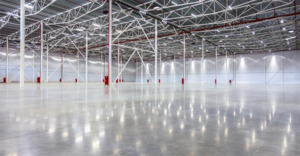Industrial: Real Estate’s Hottest Sector?
July 5, 2018 | Beth Glavosek | Blue Vault

According to a recent Wall Street Journal article, development of industrial space in the U.S. is at a 10-year high, and there are no signs of a slowdown any time soon. In fact, roughly 247 million square feet of new industrial space is expected to be delivered this year, the most since 2007, while vacancies are at a 17-year low, according to the WSJ.
Two factors – growth in e-commerce and population growth – have created strong demand for industrial real estate. In an article for National Real Estate Investor, a spokesperson for Jones Lang LaSalle says that, “E-commerce sales have increased by 16% year-over-year and now account for 9% of all U.S. retail sales. E-commerce also accounts for about 12% of industrial leasing activity and an additional 22% to 30% of indirect leasing through closely tied logistics, distribution and 3PL channels.” He goes on to say that we are just seeing the beginning of exponential growth in e-commerce, which will continue to have a significant impact on industrial development for the next few years. One of the biggest drivers for new industrial projects is the need to put distribution facilities closer to consumers, he notes.
In a similar vein, population growth is another factor causing certain markets to expand. A higher population means more shoppers buying goods online. Supply constraints in these markets cause rents to go up, which bodes well for industrial investors.
Industrial real estate includes both large, bulk warehouses and smaller, light industrial properties. In general, a bulk industrial property is a larger building on the outskirts of town with more than 500,000 square feet, higher ceiling heights, and wider truck court depths. Light industrial buildings are closer in proximity to urban core areas, and they’re smaller buildings that are ideal ‘last-mile’ facilities to get packages to urban consumers.
According to Nasdaq, a recovering economy, healthy job market, tax reforms, a healthy manufacturing environment, and high business inventories are likely to drive demand for warehouse and logistics real estate, which will provide significant impetus to industrial REITs.











